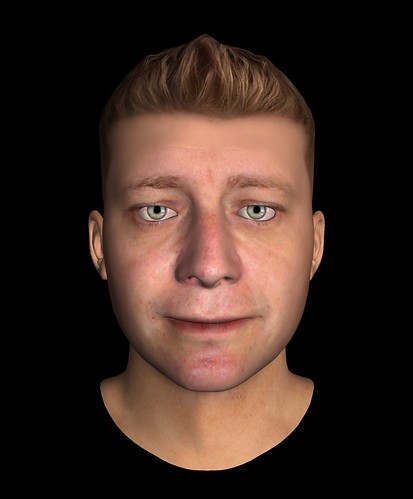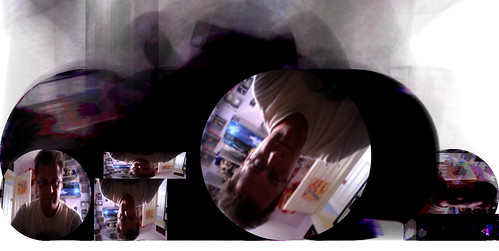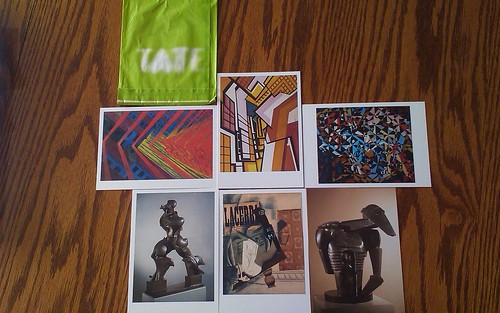Towards the end of each year and start of the next many people in “serious businesses'” seem to have to suffer the torture that is the annual performance review. Not having to deal with this ridiculous set of processes this year has not kept me away from it. I still see the unfortunate side effects that the various systems used have on people, their morale and their sense of belonging to an organization.
What tends to happen in most large companies is that they have decided that everyone should be measured against some set of targets. (That sort of makes sense). They then decide that clearly some people will be better at things that others. (Another correct assumption). They then decide that a bell curve should be applied to the performance of people. i.e. lots in the middle of the road and some great people at one end and no so great at the other. (This also makes some sense).
Then the logic goes out of the window in favour of process.
The bell curve is not applies across the entire population at once. Instead it is broken up into bell curve copies with equal weighting and applied to nominal collections of individuals, such as a department. As each department and individuals actual objectives are probably different the relative performance and the bell curve are in effect blown to pieces, like for like is not easily applied.
Various groups of individuals may have champions in the political systems who fight for a greater share of the bell curve, but many will instead try and fit the bell curve onto their people then attempt to justify their decisions.
A whole heap of time and money is wasted in many large corporations in order to ensure that the status quo is maintained.
I have experience all ends of the spectrum in these evaluations. If you get an outstanding result you feel great, but also slightly guilty. Very few people will take people to the pub to celebrate their “outstanding” performance rating.
Those that get the next level down (typically there are only 4 or 5 ratings) feel sort of happy, but annoyed at being so close yet so far form being told they are great.
The next rating is really “yep you are just about doing you job” thanks very much for that!
The other ratings are typically supposed to be a wake up call of some sort, or a threat, or “well its just your turn”. The slightest reason can be used to reduce someone to a low performer. I have heard and experienced enough aberrations in the process such as the particular dichotomy of receiving some of these ratings dressed up as business but knowing they were personal and possibly bullying, to know that the systems used are damaging in so many ways.
So what does a company achieve by attempting to centralise and control the distribution of performance?
Well they force most people to be mediocre, and hence the company to be mediocre.
Once thing social media has taught us is that even the most mediocre employee in a company can have a huge impact on the direction of the business. So surely it is time for the HR departments to find some innovation somewhere?
This is not to hide from competition and merit, but to actually put that back onto a footing where it means something.
I have to consider these things even more deeply in how the companies I am helping create, that I work with and possibly for deal with people.
Uncategorized
The Next Decade?
It may seem a bit of a long shot to look forward to the next 10 years but what the heck!
1. Keep Walking. Obviously the big one to consider is what used to be called mobile. Everything is mobile now. We already have relatively easy access to 3g and wi-fi to allowed our technology to be untethered. Of course this needs to be wrestled away from the anti-competitive telecoms companies. The thing stifling growth is the wayward charging mechanisms. Cross country boundary charges and tariffs will be forced to change, either by regulation or by a new entrant into the market that is not a handset provider. It may be more schemes like the BT FON emerge. With that you opt into a scheme to share your home wireless with passers by who also opt in to share their home wireless. It creates a huge ad hoc network. Just imagine too if a generation of devices are made that not only receive but also transmit and act as wireless hubs.(The already exist BTW!) If the pricing model is an opt in to share you wireless access wherever you are and you get paid for encouraging others to use you mobile hotspot (as they encourages new users to access their applications) then we may see a game changer in personal comms.
2. Batteries. This has to get sorted out in the next decade. Our devices demand more and more, and we rely on them for longer so we need a sustainable and revolutionary power transmission or battery device.
3. 3d Printing. 10 years should be enough for this to become “mainstream” as by then the transmission of 3d content and design with the associated rules and regulations, kite marks, certifications etc will start to be in place. Why move goods all over the planet when you can make them locally? It really is a no brainer.
4. Games as work. Eventually enough of us will have been through the corporate mill, will also have spent a large portion of our life entertaining ourselves with World Of Warcraft and Modern Warfare 2 and even Farmville to work out that there is no reason for us as humans to druge along doing work for the sake of it that is dull and repetitive. Menial tasks can be enhanced for very little cost into levelling up entertaining, morale lifting and thought provoking activities. Work and business is a Role playing game (I have pointed this out before back on Terra Nova). Donald Trump says he is not interested in money but it helps to use it to keep score. (I guess I need to alter the game I play 😉 ). This will of course become a lot easier to do as services in the enterprise are exposed and instrumented then rendered and represented in more meaningful ways in environments like Second Life Enterprise. As with all forms of human communication some people will evolve and flourish learning to entertain and inform, to persuade and motivate using all the online tools and presence that we are able to engage with today.
5. Brands crossing digital borders. Engagement with people where they happen to want to be online and offline will have to increase. It will not be enough, as back in the early web to just leave you website lying around to be found. Business has to become a travelling exhibit, a movable market stall that can be adjusted and placed wherever people are or want to be. Digitally distance knows no bounds, but you need more than a sign post or banner ad. Active guides, persuaders, dare I say salespeople? Maybe I am referring to my evangelist brethren though? People who know the territory, have experience and speak the language working for companies, not just as a a sideline that the company takes for granted.
6. Collectives vs Corporate. I would really like to see an end to the ridiculous long statements and terms and conditions on digital content. The pages of scrolling and checkbox ticking, the multi country copyright statements on films that you cant skip (particularly kids ones). We should evolve a fair wait of policing copyright, of acknowledging the origins of an idea. I am fairly certain this charge will be led as more of us become distributed and work more as collectives online. Of course this will be cyclic as those collectives will evolve into the corporate entities we have again today but the re-arrangement will start to occur first over the next decade.
7. Renaissance – Access for All. Projects such as one laptop per child and local country initiatives to enable connectivity really are essential. We have a divided society where many of us are the monks with our illuminated apple logos enabling us to connect with the world. We have an increasing number of people who are just learning to decipher the history of our writings, but are now starting to not need to hear us read it out load, but to write their own digital histories and more importantly their future. We have a few naysayers that are worried that if everyone has access to this the world will end as we know it. I mean…. people communicating with one another and understanding one another’s cultures, ideas and needs without being brokered by a ruling class, whatever next! With a rise in education powered in part by digital inclusion at a global level I expect to see some huge innovations, upheavals and positive outcomes over the next 10 years. Putting the tech in the hands of people, but just as a tool to use however suits them, not just for the sake of a cool gadget is going to cause this generational renaissance.
So there we are a lucky 7. Happy new year and happy new decade everyone
Happy Halloween from Feeding Edge
I could not resist this, we did not carve it in the end went for a more traditional look. Happy Halloween everyone.

Evolver Avatar on the Iphone via Unity3d
It has been a busy week for travel and meetings this week. However in the gaps between pieces of work I have been exploring what I can do quickly and simply with the Iphone 3GS. I had been looking at the various 3d toolkits, doing model import by hand.
In the end it struck me as obvious to use unity3d iphone as this just takes away the underlying hassle.
Using unity3d it was very easy to bring things in such as my Evolver 3d model into an app and make it draggable and rotatable using touch. This took approximately 10 minutes to do. I spent more time wondering about the various particle effect parameters than anything else.


Obviously you can do a whole lot more, but it is a massive leap in productivity. It does not require any other strange contortions or going via windows in order to get a good 3d model in.
There are a few quirks in the tool chain but things like the Unity Remote application that lets you see whats going on via your Mac and streaming media from the iphone are great. (Hint if you cant get unity remote to compile and deploy just grab a version from the iphone store (lost a few minutes thinking about that!)
I know the hardcore techs will be saying you can build all this from the various bits, cocos, SIO2 etc but I have had to do that one to many times and I want to explore the ideas for applications rather than the guts of the platform.
Just having this in my hands and using it has created rather a long list of “I wonder if…” apps to create. Including using the touch interface to control some Opensim objects.
Using the Evolver Clone. Is that me?
Yet more experiments with Evolver. I tried using the single photo upload and then adjusting the regsitration points on the face. The result is interesting I think.

It was from this delightful glasses removed picture of my goodself. See what you think.

As an avatar augmentalist rather than a realist I think I prefer the more extreme cartoon or enhanced avatars to the photo real. I was getting a little bit of personal uncanny valley each time I try pasting my face into something. So I will stick with the previous AV for now.
Apply to become a TED Fellow @ TED2010!
I received this via eightbar and thought is worth posting
Ever dreamed of attending a TED Conference…of being around some of the world’s greatest minds and discussing the best technology, art, architecture, music, film, science, literature, etc? Are you innovative and want to meet with other people like you from around the world? Then apply to the TED Fellows program!
Apply online here: www.ted.com/fellows/apply.
Organizers of the TED Conference are searching for 25 promising Fellows from around the world to participate in TED2010. The TED Fellows program will accept applications for fellowships through September 25, 2009.
MORE INFO:
About the TED Fellows Program
The TED Fellows program is a new international fellowship program designed to nurture great ideas and help them spread around the world. This year, organizers will select 25 individuals from around the world to attend TED2010. At the end of the year, organizers will select 15 individuals from a pool of the TED and TEDGlobal Fellows to participate in an extended three-year Senior Fellowship, bringing them to six consecutive conferences. The principal goal of the program is to empower the Fellows to effectively communicate their work to the world.
Benefits
Benefits of the Fellowship include conference admission, round-trip transportation, housing and all meals. Fellows will also participate in a pre-conference with the opportunity to present a short talk for consideration for TED.com, elite skills-building courses taught by world experts, social opportunities and surprise extras. This is not a monetary Fellowship; the benefits are in-kind only.
Who we are looking for:
The program seeks remarkable thinkers and doers who have shown unusual accomplishment, exceptional courage, moral imagination and the potential to increase positive change in their respective fields. The program focuses on innovators in technology, entertainment, design, science, film, art, music, entrepreneurship and the NGO community, among other pursuits. The program targets individuals from the Asia/Pacific region, Africa, the Caribbean, Latin America, and the Middle east, though anyone from anywhere in the world is welcome to apply. Applicants are generally between 21-40 years of age, though anyone over 18 and over 40 may apply. They must also be fluent in English.
Application process and more information:
All applicants must apply online at http://www.ted.com/fellows/apply. Information about TED is available at http://www.ted.com; and information about TED2010 is available at http://conferences.ted.com/TED2010/.
Please email fellows@ted.com if you have any questions, would like more information, if you’d like to nominate an extraordinary individual!
About TED:
TED stands for Technology, Entertainment, Design. It started out in 1984 as a conference bringing together people from those three worlds. Since then its scope has become ever broader to include science, business, the arts and the global issues facing our world. The annual conference now brings together the world’s most fascinating thinkers and doers, who are challenged to give the talk of their lives (in 18 minutes). Attendees have called it “the ultimate brain spa” and “a four-day journey into the future.” The diverse audience — CEOs, scientists, creatives, and philanthropists — is almost as extraordinary as the speakers, who have included Bill Clinton, Bill Gates, Nandan Nilekani, Ashraf Ghani, Jane Goodall, Vilayanur Ramachandran, Ngozi Okonjo-Iweala, Sir Richard Branson, Stephen Hawking and Bono.
Painting with physics – Kinetic Sketch
AnnieOK just tweeted a link to this kinetic sketch web application. Its a Flash based application that the brushes are objects that are responding to one another and acting as physical simulations. i.e. a round brush rolls and square one will tip from its corner. In addition to simple physics like gravity there are lots of creativity settings for the trails that are left behind. You can even use live video (though on my Mac I had to tell flash to use the USB video class (a right click on the background and quick menu select in settings to sort that out) in order to get me as a brush. You can then post to multiple places such as I did here with going straight to Flickr (so its suitably social media aware as to be useful too 🙂 )

I still find the most basic of physics simulations interesting, as they used to be the things I wrote with my first computer (a ZX81) intertia, collisions and gravity even just in 2D have an organic feel to them. This though takes that even further with the painting aspects leaving a digital echo of the physical movements. Wonderful stuff IMHO.
I did a little extra with it that was not camera based.

It started to remind me of the recent Tate Modern show on the futurists that I went too.
It is interesting what those talented and revolutionary artists may have done back in 1911 with the technology we have today.
It also reminded me I had not blogged about the wonderful sculpture that I did not get a photo or postcard of by Umberto Boccioni (who also did the running man above) entitled “Development of a bottle in space”

This was a very striking piece but also one that looked more like prim twisting in Second Life than anything else I had seen.
Second Life behind the firewall
As I dont think the Linden blogs are very track back friendly I thought I would post my comment on the Second Life behind the firewall article here too, having had a small part in driving the demand that has led to this 🙂
I have to say that this is nothing but good news. Way back in the distant yonder when Roo and I sat there wondering how to get IBM into the industry we certainly by about day 2 realized how great it would be to also be able to run secure instances of something similar to the public grid. There was a great google video from about 4 years ago of Cory and Philip aluding to that direction.
The public SL grid has a massive role to play still, but, just as with the web, there really is no reason to have it all served out of one place. The resistance in the early days to us corporates turning up (even though it was unofficial to start off with) has in fact generated support for an industry that we can all enjoy in our own way.
Developers are able to go off and build new virtual world platforms and explore extending existing ones. Residents of SL are able to carry on being who they are and who they want to be, company employees are able to explore ways of better, richer and quite frankly more enjoyable communication at distance.
Second Life has sparked many directions, the open source movement with opensim, other providers with products to help in other sectors.
There is plenty of room for every application and every personal need for many of these ways of interacting. We often get caught by the real world analogy of a single planet working a single way but we have a chance to explore a whole new set of ways to interact, for grids to interact, to augmenting real world with virtual information. The list goes on.
SL is evolving, peoples expectations of a virtual world are evolving. We are moving from “why bother?” to “can we?”. As soon as the “can we?” deman arrives that brings change and innovation.
How this all is structured at the moment clearly is not the end of the journey. We have not solved every technical, social and philisophical puzzle, but we have opened up many people eyes.
I am really looking forward to seeing where we all take this.
Rednosin, Chinposin for Comic Relief
The rednosin twitter account made me aware of the excellent addition to the comic relief donation options. That of buying a digital rednose picture. Whilst many of us can bolt a red nose onto a picture that is not the point. The ability donate and join in with the excellent charity that is Comic relief is something we should all do. We use avatar pictures all over the place and you will see twitter full of them next few days.
Check out Rednosin Chinposin so see more.
So what are you waiting for! It works for Graham Norton, Chris Moyles or who ever comes up in this picture from the website :0)


